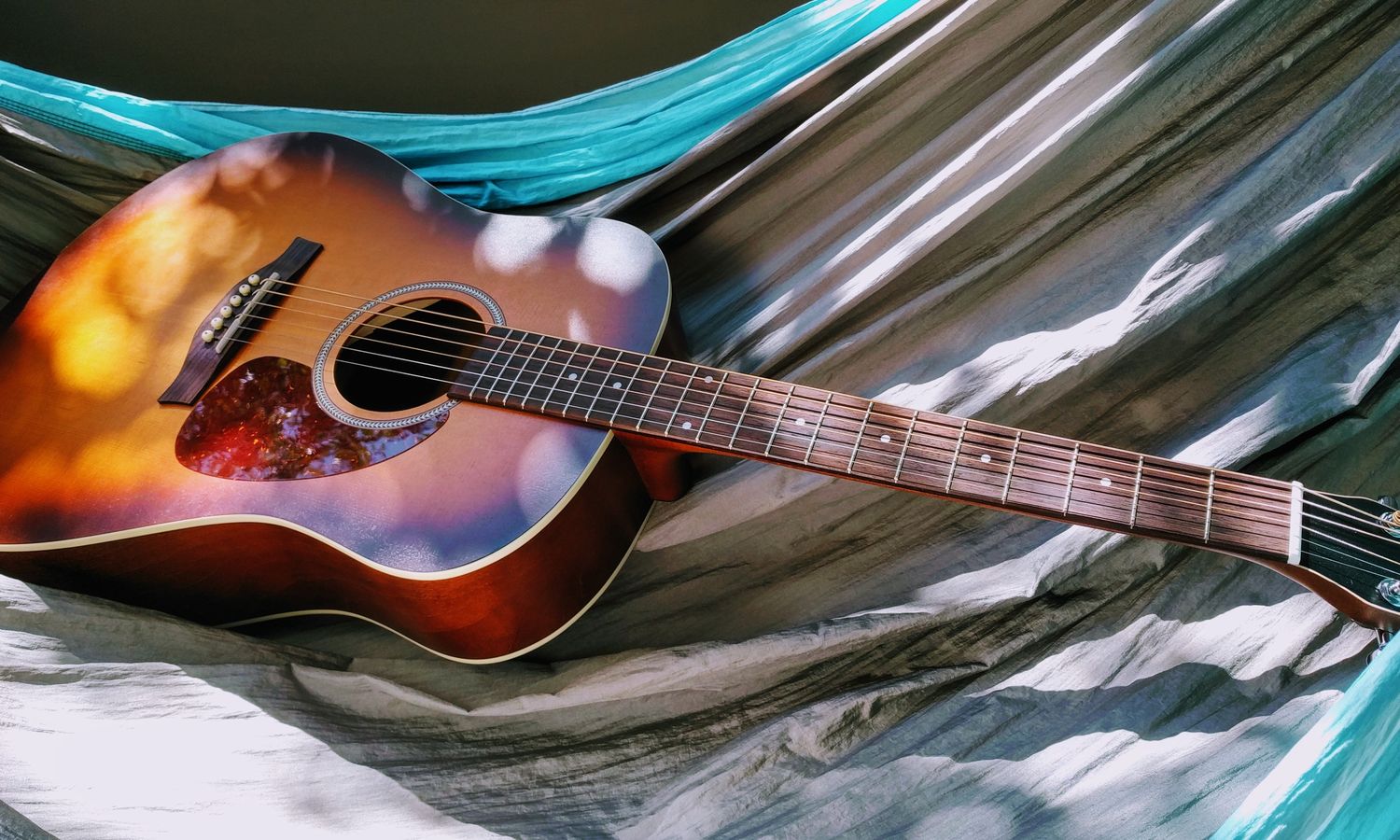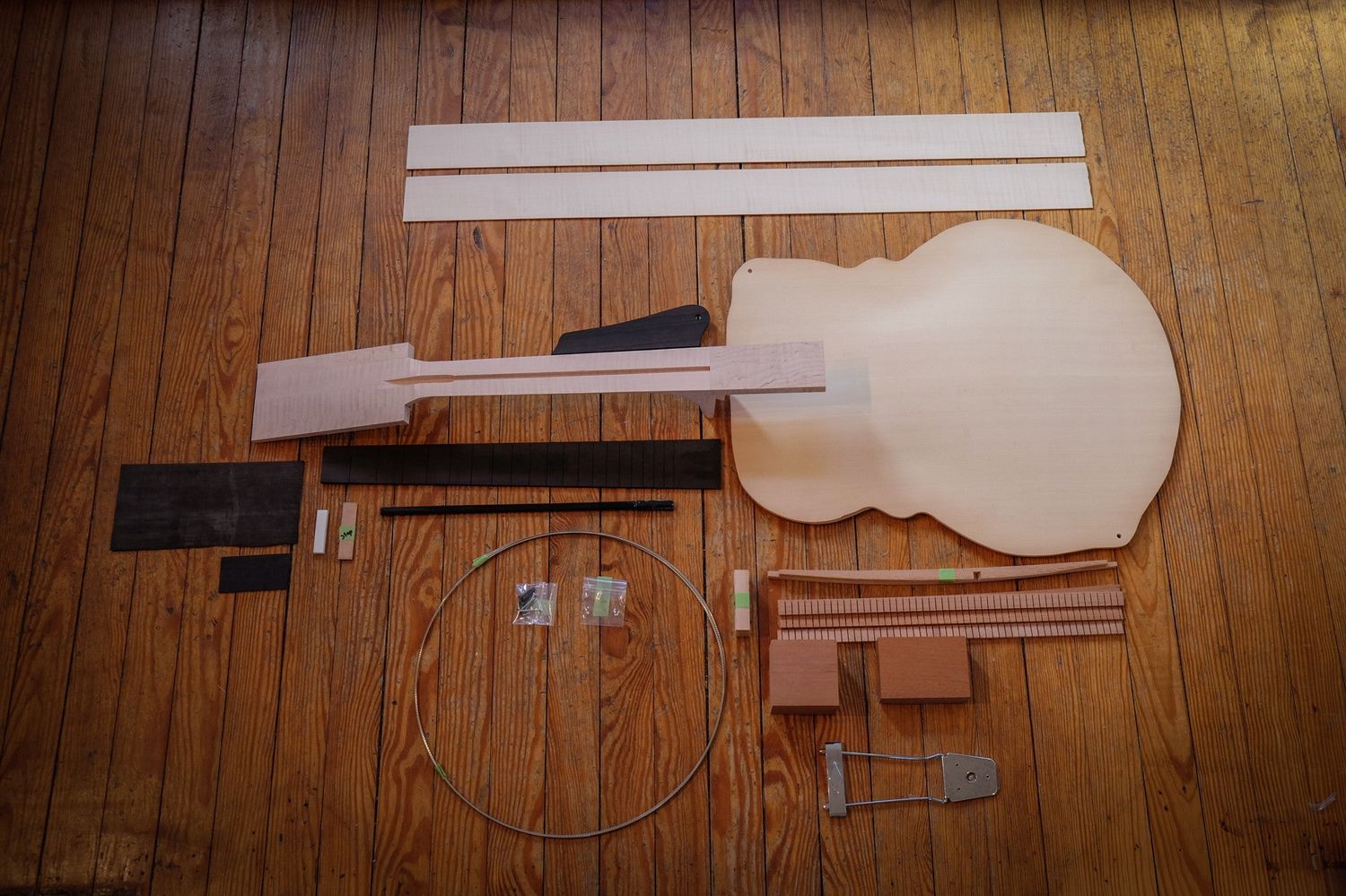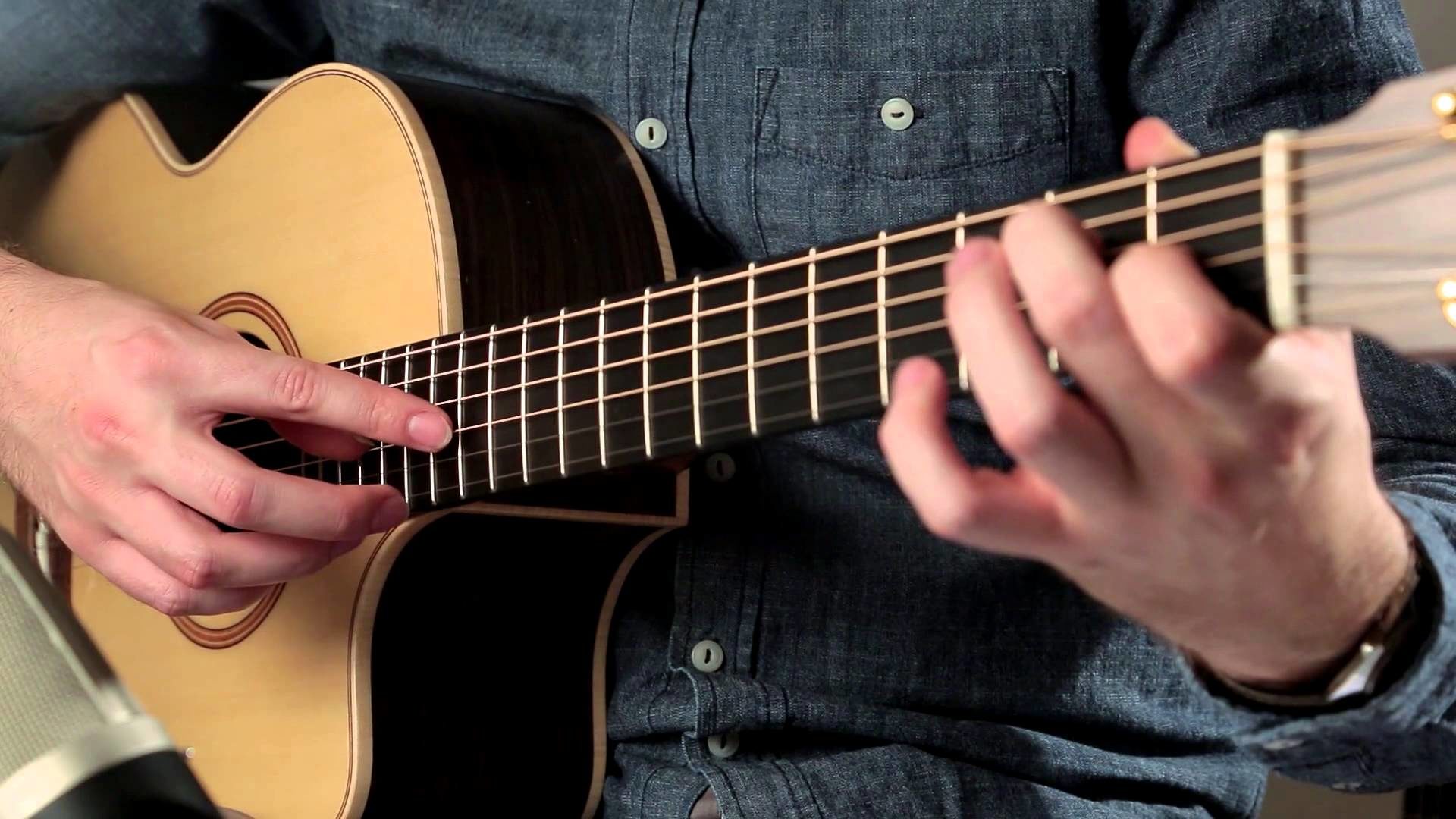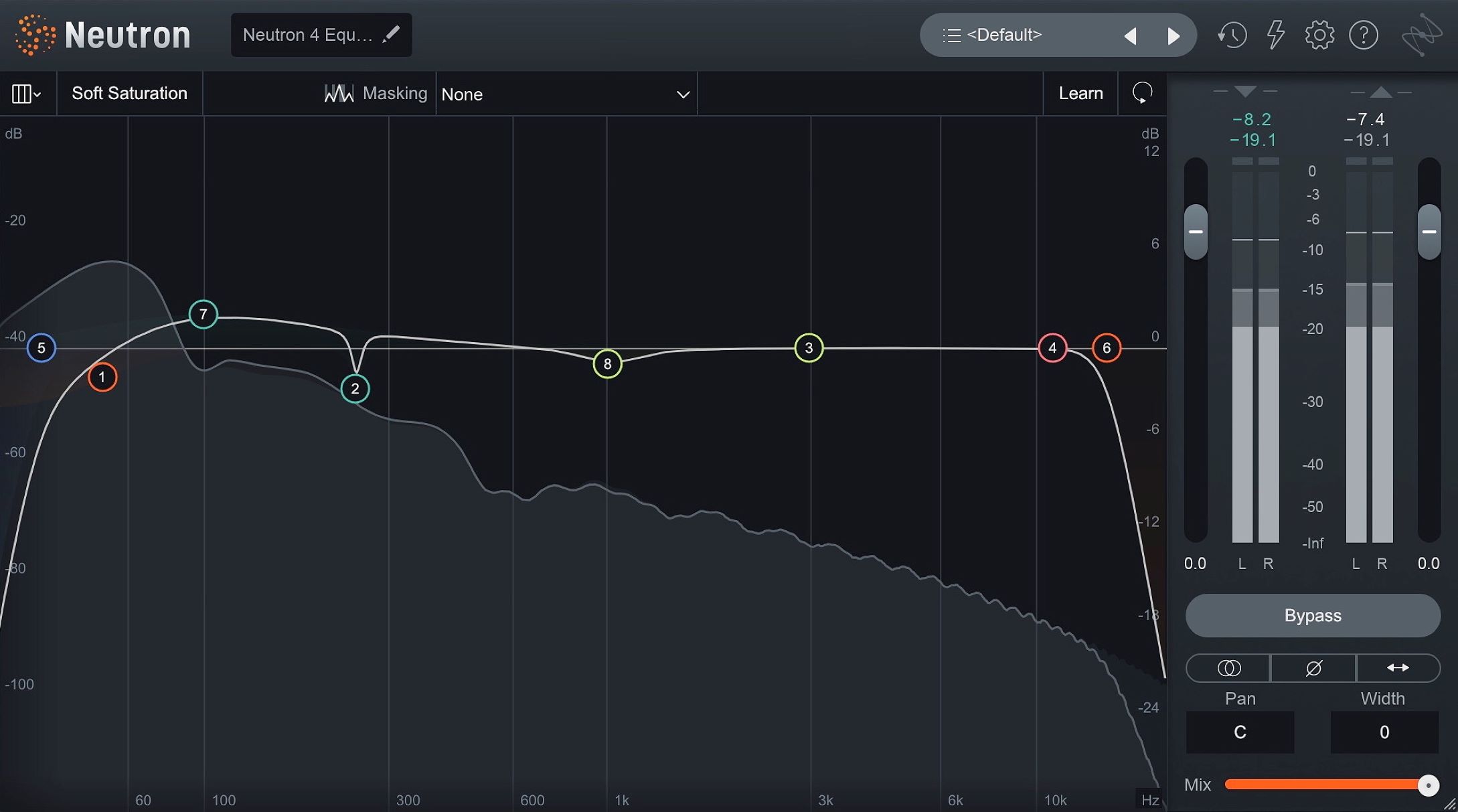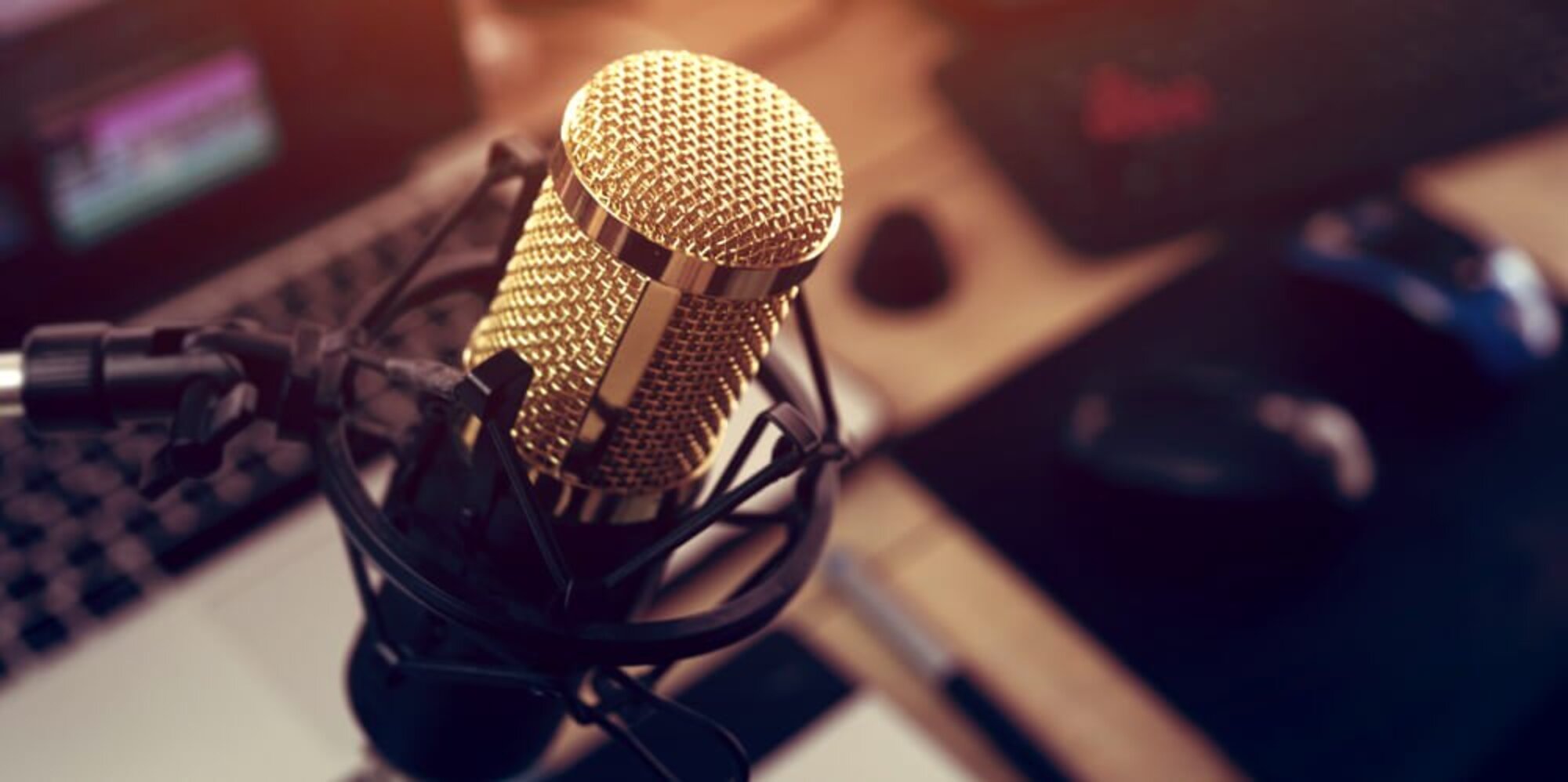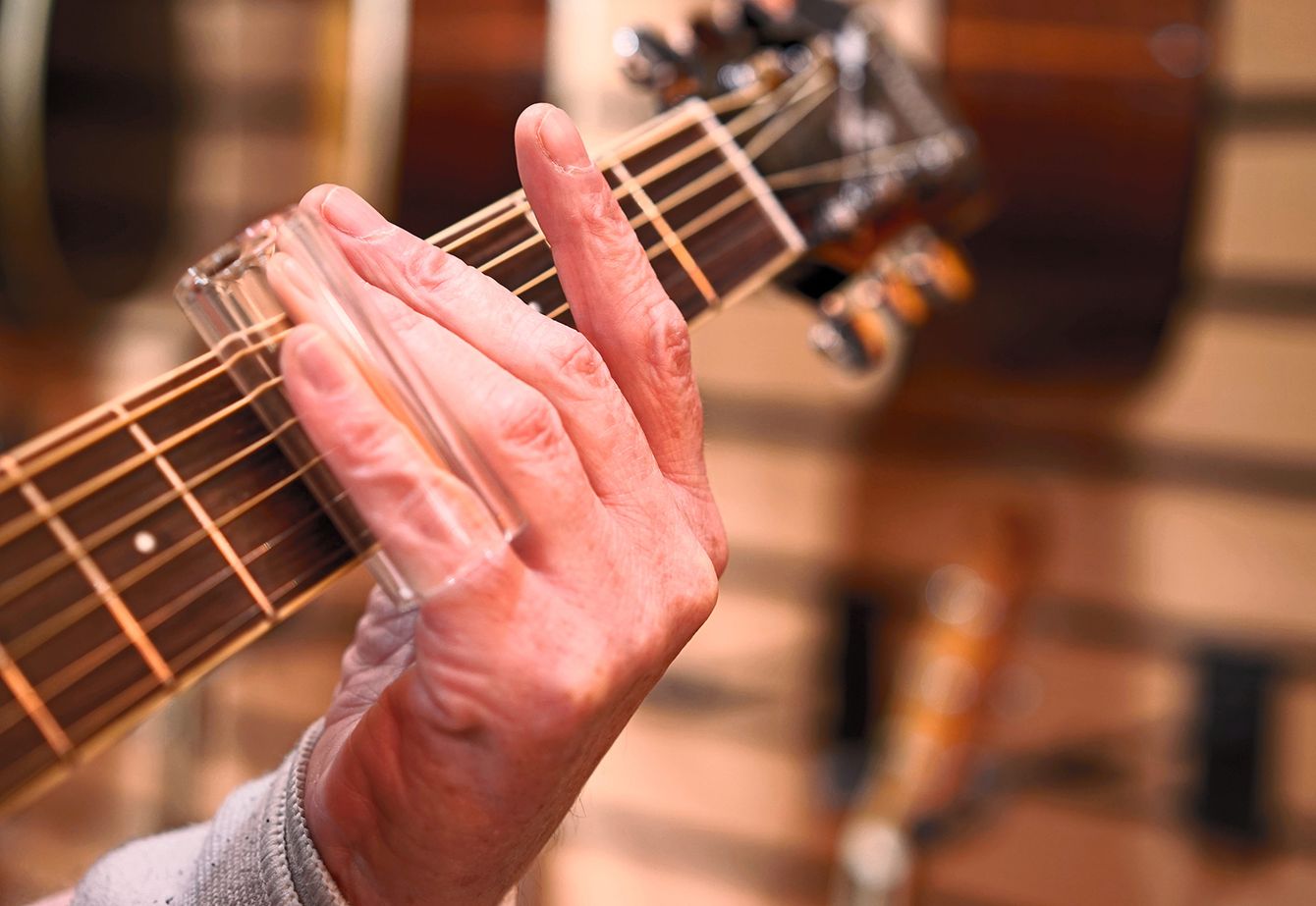Home>Production & Technology>Acoustic>How To EQ An Acoustic Guitar
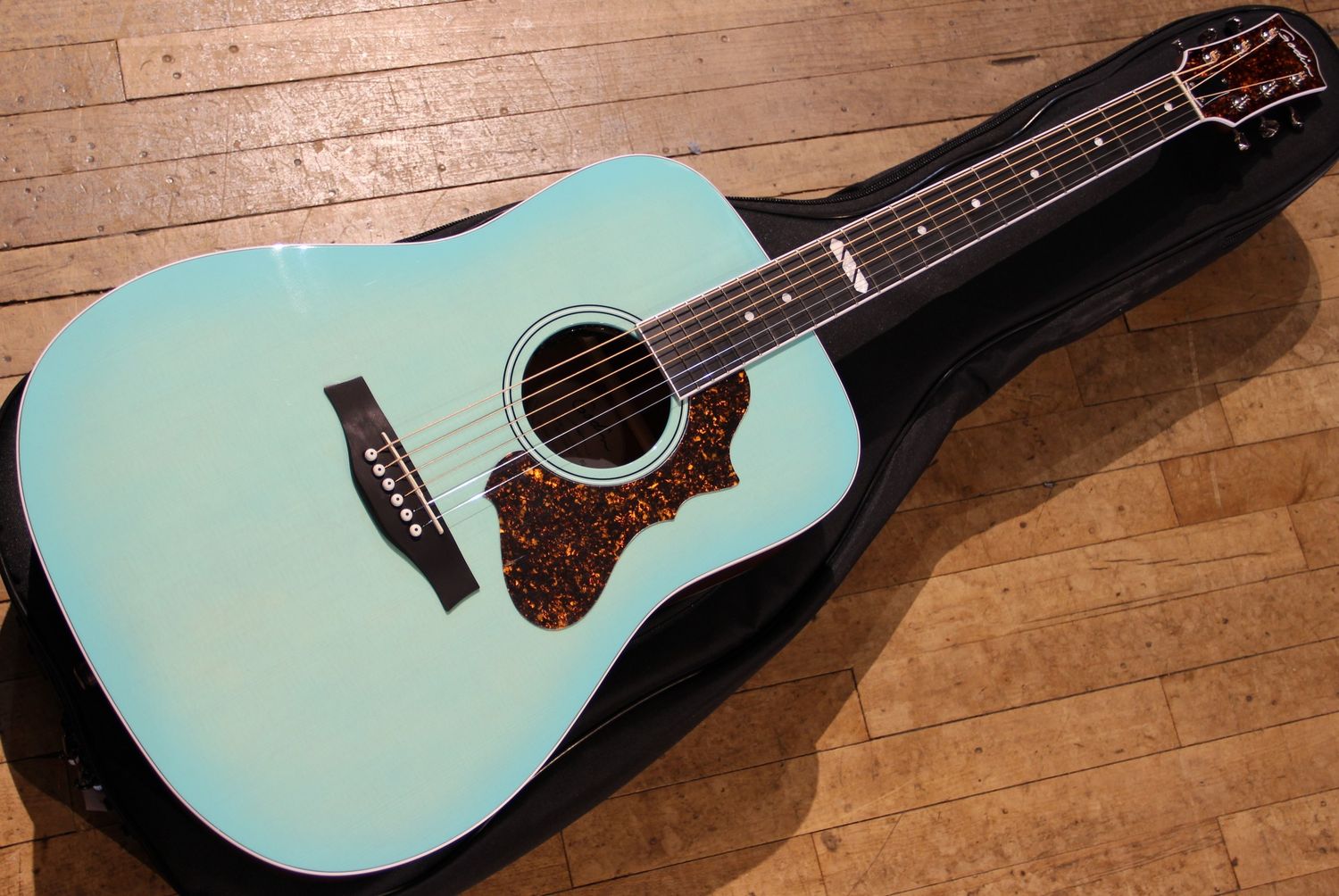

Acoustic
How To EQ An Acoustic Guitar
Published: March 11, 2024
Learn how to EQ an acoustic guitar for the perfect sound. Discover essential tips and techniques for shaping the acoustic tone.
(Many of the links in this article redirect to a specific reviewed product. Your purchase of these products through affiliate links helps to generate commission for AudioLover.com, at no extra cost. Learn more)
Table of Contents
Introduction
When it comes to capturing the rich, resonant tones of an acoustic guitar, the art of equalization, or EQ, plays a pivotal role. Whether you're a seasoned musician, an aspiring recording engineer, or simply a lover of acoustic melodies, understanding how to EQ an acoustic guitar can significantly enhance its sonic presence and overall impact.
The process of EQ involves manipulating the frequency spectrum of an audio signal to achieve a desired tonal balance. For an acoustic guitar, this means sculpting its sound to bring out the warmth of the low-end frequencies, the clarity of the midrange, and the sparkle of the high frequencies. By harnessing the power of EQ, you can breathe life into a lackluster recording, mitigate unwanted resonances, and ensure that the guitar sits perfectly in the mix.
In this comprehensive guide, we will delve into the intricacies of EQ for acoustic guitar, exploring the fundamental principles of the frequency spectrum, identifying common problem frequencies, and unveiling effective EQ techniques. Whether you're aiming to capture the pristine sound of a live performance or seeking to elevate the impact of a studio recording, mastering the art of EQ for acoustic guitar is a valuable skill that can elevate your musical endeavors to new heights.
So, grab your favorite acoustic guitar, put on your producer hat, and let's embark on a journey to unlock the full sonic potential of this beloved instrument. Whether you're a seasoned musician, an aspiring recording engineer, or simply a lover of acoustic melodies, understanding how to EQ an acoustic guitar can significantly enhance its sonic presence and overall impact.
Understanding the Frequency Spectrum of an Acoustic Guitar
Before delving into the intricacies of equalization for acoustic guitar, it's essential to grasp the fundamental characteristics of the instrument's frequency spectrum. The acoustic guitar produces a wide range of frequencies, each contributing to its distinctive tonal profile. Understanding this spectrum is crucial for effectively shaping the guitar's sound through EQ.
The frequency spectrum of an acoustic guitar spans from the low-end bass frequencies to the shimmering highs, encompassing a vast range of tonal nuances. At the lower end of the spectrum, the fundamental frequencies of the guitar's body and strings provide the foundation for its rich, resonant sound. These frequencies typically range from 80Hz to 250Hz, delivering warmth and depth to the instrument's sonic character.
Moving up the spectrum, the midrange frequencies, which typically fall between 250Hz and 2kHz, play a pivotal role in defining the guitar's clarity and presence. This range captures the essence of the instrument's tonal projection, carrying the intricate harmonics and overtones that give the acoustic guitar its expressive quality.
As we ascend further, we encounter the high frequencies, ranging from 2kHz to 20kHz, where the guitar's brilliance and sparkle reside. These frequencies accentuate the shimmering harmonics and intricate details of the instrument's timbre, adding a touch of air and articulation to its overall sound.
It's important to note that the frequency spectrum of an acoustic guitar is not static; rather, it evolves dynamically as the instrument is played. Factors such as playing technique, string material, and body resonance contribute to the complex interplay of frequencies that define the guitar's sonic signature.
By comprehending the dynamic interplay of frequencies within the acoustic guitar's spectrum, we gain insight into the tonal intricacies that shape its sound. This understanding forms the foundation for applying targeted EQ adjustments to enhance the instrument's sonic characteristics, allowing us to sculpt its tonal balance with precision and artistry.
In the next section, we will explore the art of identifying problem frequencies, a crucial step in the EQ process that empowers us to address sonic irregularities and optimize the acoustic guitar's sound.
Identifying Problem Frequencies
Identifying problem frequencies is a critical aspect of the equalization process for an acoustic guitar. These problematic frequencies, often referred to as resonant peaks or frequency build-ups, can detract from the instrument's clarity, balance, and overall sonic integrity. By pinpointing and addressing these issues, we can unleash the true potential of the acoustic guitar's sound.
One of the most effective methods for identifying problem frequencies is through active listening. When working with an acoustic guitar recording, listen attentively to the playback and pay close attention to any tonal irregularities or areas where the sound feels congested, muddy, or harsh. These sonic anomalies often manifest as specific frequencies that stand out unnaturally or mask the instrument's natural resonance.
Additionally, utilizing a spectrum analyzer or EQ visualizer can provide valuable insights into the frequency distribution of the acoustic guitar's sound. These tools offer a visual representation of the frequency spectrum, allowing you to identify peaks, dips, and areas of imbalance with precision. By observing the frequency display while the guitar is playing, you can pinpoint problem frequencies and gain a clearer understanding of the tonal anomalies that require attention.
Another effective technique for identifying problem frequencies involves sweeping a narrow-band EQ boost across the spectrum while listening in real-time. By gradually boosting the EQ at various frequencies, you can isolate and accentuate specific bands, making it easier to identify areas of resonance, muddiness, or harshness. As you sweep through the spectrum, pay attention to frequencies that exacerbate the undesirable characteristics of the guitar's sound, as these are indicative of problem frequencies that require corrective measures.
Furthermore, understanding the sonic characteristics of the acoustic guitar and its interaction with the recording environment is crucial for identifying problem frequencies. Factors such as room resonance, mic placement, and recording techniques can introduce sonic irregularities that manifest as problem frequencies in the recorded sound. By considering these variables, you can develop a discerning ear for identifying problematic frequency build-ups and resonant peaks, enabling you to address them effectively through targeted EQ adjustments.
In essence, identifying problem frequencies is a nuanced process that demands attentive listening, technical analysis, and a deep understanding of the acoustic guitar's sonic behavior. By honing your ability to identify and address these problematic frequencies, you can elevate the clarity, balance, and sonic allure of the acoustic guitar, ensuring that its natural resonance shines through with brilliance and authenticity.
EQ Techniques for Acoustic Guitar
Mastering the art of EQ techniques for acoustic guitar is a transformative journey that empowers you to sculpt the instrument's sonic landscape with precision and artistry. By leveraging a range of EQ techniques, you can harness the full potential of the acoustic guitar's tonal richness and clarity, ensuring that its sound resonates with depth and authenticity.
1. Subtractive EQ:
Subtractive EQ serves as a foundational technique for refining the tonal balance of an acoustic guitar. By identifying and attenuating unwanted frequencies, you can eliminate sonic muddiness, harshness, and resonance build-ups that detract from the instrument's natural clarity. When applying subtractive EQ, start by sweeping through the frequency spectrum and attentively listening for areas of imbalance. Once identified, use a narrow-band EQ to reduce the amplitude of problematic frequencies, restoring the guitar's sonic integrity and enhancing its overall clarity.
2. Low-End Shaping:
Shaping the low-end frequencies of an acoustic guitar is essential for establishing a solid foundation and warmth in its sound. By delicately sculpting the low-end range, typically between 80Hz and 250Hz, you can accentuate the instrument's natural resonance while mitigating boomy or muddy characteristics. Consider employing a gentle low-shelf EQ to subtly boost the lower frequencies, enriching the guitar's warmth without overpowering the mix. This technique enhances the instrument's presence and depth, anchoring its sonic presence with a compelling low-end foundation.
3. Midrange Definition:
The midrange frequencies, spanning from 250Hz to 2kHz, play a pivotal role in defining the acoustic guitar's clarity and projection. To enhance the midrange definition, utilize a parametric EQ to pinpoint and accentuate the instrument's harmonic richness and tonal character. By delicately boosting select midrange frequencies, you can elevate the guitar's expressive qualities, allowing its intricate harmonics and overtones to shine through with captivating clarity and presence.
4. High-Frequency Brilliance:
Elevating the high-frequency range, typically between 2kHz and 20kHz, infuses the acoustic guitar's sound with brilliance and articulation. Employ a gentle high-shelf EQ to accentuate the shimmering harmonics and intricate details of the instrument's timbre, adding a touch of air and sparkle to its sonic profile. By enhancing the high-frequency brilliance, you can ensure that the guitar's delicate nuances and expressive intricacies are conveyed with pristine clarity and captivating brilliance.
5. Dynamic EQ Adjustments:
Embracing dynamic EQ adjustments allows you to respond to the acoustic guitar's evolving tonal characteristics as it is played. By monitoring the instrument's sonic behavior in real-time, you can apply subtle EQ modifications to adapt to variations in playing dynamics, articulation, and tonal nuances. This dynamic approach ensures that the acoustic guitar's sound remains balanced and expressive, seamlessly integrating with the musical arrangement while preserving its natural resonance and character.
Incorporating these EQ techniques into your acoustic guitar production endeavors empowers you to unlock the instrument's full sonic potential, ensuring that its natural warmth, clarity, and expressive allure are showcased with captivating authenticity. By honing your mastery of EQ techniques, you can elevate the sonic impact of the acoustic guitar, enriching musical compositions and recordings with its timeless charm and emotive resonance.
Tips for Using EQ Effectively
Mastering the art of using EQ effectively is a transformative skill that empowers you to sculpt the sonic landscape with precision and artistry. Whether you're refining a live acoustic performance or fine-tuning a studio recording, employing EQ with finesse is essential for capturing the full expressive potential of the acoustic guitar. Here are invaluable tips to guide you in using EQ effectively:
-
Listen with Intention: When applying EQ to an acoustic guitar, approach the process with attentive listening. Focus on understanding the instrument's tonal nuances, identifying areas of imbalance, and envisioning the desired sonic outcome. By listening with intention, you can make informed EQ decisions that enhance the guitar's natural resonance and expressive qualities.
-
Subtlety is Key: Embrace the principle of subtlety when applying EQ to an acoustic guitar. Instead of drastic frequency boosts or cuts, opt for gentle adjustments that delicately shape the instrument's sound. Subtle EQ modifications preserve the authenticity of the guitar's tonal character while addressing sonic irregularities with finesse.
-
Contextual Consideration: Consider the broader musical context when applying EQ to an acoustic guitar. Whether it's a solo performance or a multi-instrument arrangement, ensure that the guitar's tonal balance complements the overall mix. By contextualizing your EQ adjustments, you can sculpt the guitar's sound to seamlessly integrate with the musical ensemble, enhancing its sonic impact within the larger sonic tapestry.
-
Dynamic Adaptation: Embrace the dynamic nature of acoustic guitar performance and recording. As the instrument is played, its tonal characteristics evolve in response to playing dynamics and articulation. Embrace dynamic EQ adjustments to adapt to these variations, ensuring that the guitar's sound remains balanced and expressive throughout the performance or recording.
-
Trust Your Ears: While technical analysis and visual tools are valuable, trust your ears as the ultimate guide in EQ decision-making. Your perception of the guitar's sonic qualities and tonal balance is paramount. Use visual aids and technical insights as supplements to your intuitive understanding of the instrument's sound, allowing your ears to lead the EQ refinement process.
-
Iterative Refinement: Approach EQ as an iterative refinement process. Make incremental adjustments, periodically reassessing the guitar's sonic characteristics to gauge the impact of your EQ modifications. This iterative approach allows you to fine-tune the instrument's sound gradually, ensuring that each EQ adjustment contributes to a cohesive and compelling sonic portrayal.
By incorporating these tips into your EQ endeavors, you can elevate the sonic impact of the acoustic guitar, ensuring that its natural warmth, clarity, and expressive allure are showcased with captivating authenticity. Embrace the art of using EQ effectively as a means to unlock the instrument's full sonic potential, enriching musical compositions and recordings with its timeless charm and emotive resonance.
Conclusion
In conclusion, the art of equalization for acoustic guitar is a profound journey that intertwines technical precision with artistic expression. By understanding the dynamic interplay of frequencies within the acoustic guitar's spectrum, identifying problem frequencies, and applying targeted EQ techniques, we can elevate the instrument's sonic presence with finesse and authenticity.
Throughout this comprehensive guide, we have explored the fundamental principles of the frequency spectrum, delving into the rich tapestry of low-end warmth, midrange clarity, and high-frequency brilliance that define the acoustic guitar's sonic allure. We have unraveled the intricacies of identifying problem frequencies, empowering us to address sonic irregularities and optimize the guitar's sound with discerning precision.
Moreover, our exploration of EQ techniques has unveiled a spectrum of transformative approaches, from subtractive EQ for refining tonal balance to delicately shaping the low-end frequencies, defining the midrange clarity, and infusing high-frequency brilliance. These techniques serve as invaluable tools for sculpting the acoustic guitar's sonic landscape, ensuring that its natural warmth, clarity, and expressive allure are showcased with captivating authenticity.
Furthermore, the tips for using EQ effectively have provided invaluable insights, guiding us to listen with intention, embrace subtlety, consider the contextual musical landscape, adapt dynamically, trust our ears, and engage in iterative refinement. These principles form the cornerstone of using EQ as a means to unlock the acoustic guitar's full sonic potential, enriching musical compositions and recordings with its timeless charm and emotive resonance.
In essence, the journey of EQ for acoustic guitar transcends technical manipulation; it embodies a profound synergy between art and science, allowing us to preserve the instrument's natural resonance while enhancing its sonic impact with finesse and authenticity. Whether capturing the pristine sound of a live performance or refining the nuances of a studio recording, mastering the art of EQ for acoustic guitar is a transformative skill that empowers us to elevate the instrument's sonic presence to new heights.
As we continue to embark on this sonic odyssey, may the timeless charm and emotive resonance of the acoustic guitar continue to captivate our hearts and inspire our musical endeavors, resonating with the authenticity and expressive allure that define its enduring legacy.




